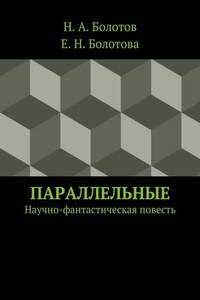Chapter One
Look at this. A sea urchin, so close we could snog each other. My eyes are crossing with the excitement of it, let alone the proximity. I feel like calling to Martin to get his fat arse down here, so I’ll have someone to share it with. But Martin couldn’t care less, and neither could the sea urchin.
I’d guess it’s been dead for a hundred million years or so. When it was pottering about, doing whatever sea urchins do in the warm, shallow sea, dinosaurs tramped the shore. It looks like a bun, doughy white, slightly heart-shaped. The stuff of life turned to stone.
I’m lying on my back. Stone is digging painfully into bone; the floor is nodules of chalk and outcrops of flint, none of them dovetailing with the knobbles of my spine. My nose is a couple of inches away from the white ceiling with the sea urchin in it. Until I saw it, I was trying to turn over, so I can wriggle back the way I came in–feet first, because there isn’t room to turn round. This is a fairly delicate moment. I don’t think the entire lot is going to come crashing down on me, but it’s always possible. The tunnel’s hardly more than body-width. Even by Neolithic standards, this is poky.
‘You OK?’
Martin, in dusty red overalls, is waiting at the end of the passage where it opens into the main gallery: a luxurious four feet high, so he can crouch on hands and knees and turn round, lucky bugger. He’s too big to crawl any further so, being the woman, I get all the shit jobs as usual.
‘Happy as a sunbeam,’ I hiss. We rarely shout underground, unless it’s ‘Get the fuck out quick.’ I’ve perfected a penetrating whisper that seems to travel down tunnels. Martin’s heard me, because he grunts. It’s hard to know who are the sparkier conversationalists: archaeologists or mining engineers.
This wouldn’t be most people’s idea of Saturday-afternoon fun, but I’ve lost count of how long we’ve been doing this kind of thing. We even did it right through the years of my marriage. Martin’s favourite archaeology happens underground. It’s dirty and it’s dangerous, and you can’t have much more fun than that. We’ll probably go on doing it as long as our joints hold out, or the luck.
Luck shouldn’t come into it, of course. As the engineer, I’m the guardian of the luck, the one who understands stresses and loads and how water seeps through stone, and can therefore take an educated guess as to whether we’re going to die today, entombed in a flint mine.
These galleries were dug out between five and six thousand years ago, by people who had only recently discovered farming. They’re amazing: they have proper air shafts, and pillars to support the roof. The light of my head-torch picks out five-thousand-year-old carbon stains on the walls, from the oil lamps the miners worked by. The gallery I’m investigating is a dead end, never properly dug out, a speculative tunnel that either failed to produce any decent flint or perhaps was one of the last to be opened before stone tools were superseded by bronze. Sorry, mate, no call for flint axeheads any more. Ever thoughtof reskilling in metalwork? Poor old flint miners. The thought of a Neolithic Arthur Scargill pops disconcertingly into my head, reminding me of those little yellow ‘Coal Not Dole’ stickers Martin and I used to wear in our student days. Flint Not Skint.
Sea urchin apart, though, I don’t like this place. There’s something claustrophobic about it, even for someone who makes a living out of going underground. The side galleries nip and pinch spitefully as you crawl down them. I keep thinking I should have brought a ball of string to make sure we find the way out again.
We’ll look bloody silly if we can’t. Particularly as no one knows we’re in here.
The point is, if Martin’s right and he can raise the money for a proper dig with the university’s blessing, I might get paid for this afternoon’s spur-of-the-moment expedition. That would be useful, because if I turn down the Bath job there may be lean times before I get a better offer.














